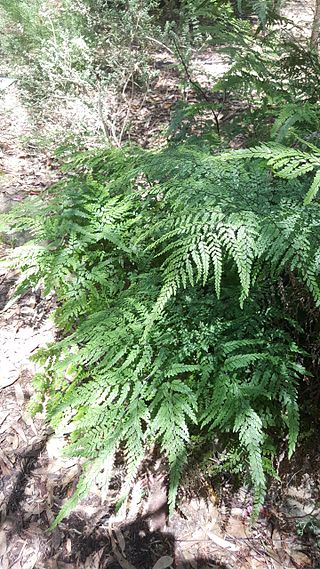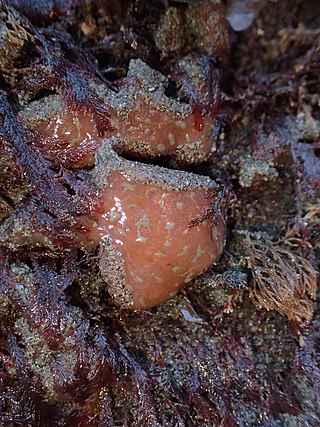
Sceliphron, also known as black mud daubers or black mud-dauber wasps, is a genus of Hymenoptera of the Sphecidae family of wasps. They are solitary mud daubers and build nests made of mud. Nests are frequently constructed in shaded niches, often just inside of windows or vent openings, and it may take a female only a day to construct a cell requiring dozens of trips carrying mud. Females will add new cells one by one to the nest after each cell is provisioned. They provision these nests with spiders, such as crab spiders, orb-weaver spiders and jumping spiders in particular, as food for the developing larvae. Each mud cell contains one egg and is provided with several prey items. Females of some species lay a modest average of 15 eggs over their whole lifespan. Various parasites attack these nests, including several species of cuckoo wasps, primarily by sneaking into the nest while the resident mud dauber is out foraging.

The Kott (Kot) language is an extinct Yeniseian language that was formerly spoken in central Siberia by the banks of the Mana River, a tributary of the Yenisei river. It became extinct in the 1850s. Kott was closely related to Ket, still spoken farther north along the Yenisei river. Assan, a close relative, is sometimes considered a dialect of Kott. The term kott may be derived from Buryat qota 'town', applied to neighbouring non-pastoral peoples, including the last few Kotts.

Didemnum is a genus of colonial tunicates in the family Didemnidae. It is the most speciose genus in the didemnid family. Species in this genus often have small calcareous spicules embedded in the tunic and form irregular or lobed colonies. Some Didemnum species, including Didemnum vexillum and Didemnum perlucidem are considered invasive species. In early 2006, Didemnum vexillum was found covering a 230 km2 area of cobble habitat in Georges Bank off the coast of New England, and is classified as an invasive species of greatest concern in coastal areas throughout Europe, New Zealand, and North America. Didemnum sp. invasions have also been recorded in Canada, the Mediterranean, and the Netherlands.
Peter Kott is a former Republican state representative for District 17 serving Eagle River, Alaska, in the Alaska Legislature for seven terms, from 1993 until 2007. He was Speaker of the House during his sixth term in 2003–2004.

Platylobium formosum, also known as handsome flat-pea, is a shrub that is endemic to Australia. It is a member of the family Fabaceae and of the genus Platylobium.

Andrew Kötting is a British artist, writer, and filmmaker.

Adiantum formosum, known as the giant maidenhair or black stem maidenhair is a fern found in Australia and New Zealand. It was one of the many species authored by Scottish botanist Robert Brown, appearing in his 1810 work Prodromus Florae Novae Hollandiae et Insulae Van Diemen. Its species name is the Latin adjective formosus "handsome" or "beautiful".

Pycnoclavella diminuta, known as the white-spotted sea squirt, white-spot ascidian, and white-spotted ascidian, is a species of tunicate, in the genus Pycnoclavella. Like all ascidians, these sessile animals are filter feeders.

Alexander Konstantinovich Kott is a Russian director and screenwriter.

Aplidium is a genus of colonial sea squirts, tunicates in the family Polyclinidae. There are about 188 species in the genus found in shallow waters around the world.

Aplidium solidum is a species of colonial sea squirts, a tunicate in the family Polyclinidae. It is commonly known as the red ascidian or sea pork.
The Burrinjuck Nature Reserve is a protected nature reserve on the south west slopes of New South Wales, Australia. The 5,250-hectare (13,000-acre) reserve is located adjacent to the Burrinjuck Dam, with 5,118 hectares of the reserve located on the northern side of the reservoir, and the remaining 89 hectares located on the southern side of the reservoir to the northeast of Black Andrew Nature Reserve. It includes land formerly managed as the Burrinjuck State Forest and Burrinjuck State Recreation Area.

Personal is the nineteenth book in the Jack Reacher series written by Lee Child. The novel was published on 28 August 2014 in the UK, New Zealand, Australia and Ireland, and on 2 September 2014 in the United States and Canada. The plot of the book revolves around Reacher's pursuit of a sniper who has attempted to assassinate the President of France. This book is written in the first person.
Genoplesium formosum, commonly known as the Cathcart midge orchid, is a small terrestrial orchid found in southern New South Wales. It has a single thin leaf and up to twenty five dark reddish purple flowers with darker lines.

Aplidium elegans, the sea-strawberry, is a species of colonial sea squirt, a tunicate that is a benthic invertebrate in the family Polyclinidae and class Ascidiacea. It is native to shallow waters in the Atlantic Ocean and Mediterranean Sea. It is also found in between France and the United Kingdom.

Sylvia Kotting-Uhl is a German politician of Alliance 90/The Greens who served as a member of the Bundestag from the state of Baden-Württemberg from 2005 until 2021.

Polytrichastrum formosum, commonly known as the bank haircap moss, is a species of moss belonging to the family Polytrichaceae.
Aplidium abditum is a sea squirt in the family Polyclinidae and was first described in 2006 by Patricia Kott, from a specimen collected at 6-8 m depth at Port Davey, Tasmania.
Sigillina exigua is a sea squirt in the family Holozoidae and was first described in 2006 by Patricia Kott, from a specimen collected at a depth of 10-12 metres in Western River, Kangaroo Island.













